Browse Primary Sources
Locate primary sources, including images, objects, media, and texts. Annotations by scholars contextualize sources.
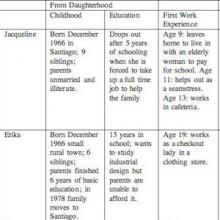
Life Histories (Chile) Table
Women all over the world may undergo life-course transitions from daugtherhood to motherhood, a great similarity that shapes their lives due to what is perhaps the biological difference that most distinguishes women from men: their childbearing capacity. The circumstances under which women experience transitions, however, vary greatly.

Ayyubid and Ottoman Architecture
In the Islamic world, women were able to own and control their own property at a time when Christian women in Europe were unable to do so. Many wealthy women endowed public buildings as a mark of their piety. In these examples, we see the way that Ayyubid and Ottoman women used the endowment of public architecture to engage directly in public life.
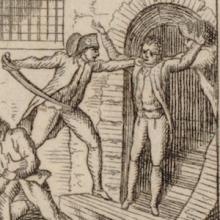
Massacre of the Prisoners
Yet another image from the newspaper R*volutions de Paris shows crowds massacring refractory clergy and prisoners. These panels reveal similar occurrences at the police prisons of the Chatelet and the Bic*tre, where altogether an estimated 800 were killed in the first week of September.
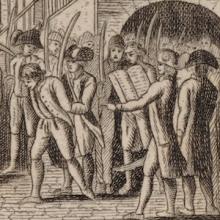
Massacre of the Priests
This image, also reproduced from the newspaper R*volutions de Paris, shows crowds massacring refractory clergy and prisoners. The panels depict the former convent of the Carmelites (where 163 were killed) and the prison known as the Force, which had formerly been used to incarcerate prostitutes, where approximately 300 defrocked clergy were executed.
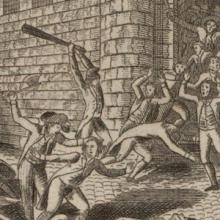
Massacre of the Prisoners of St. Germain Abbey
In one of the most widely reported incidents of the September massacres, a "jury" of twelve "commissioners" was formed spontaneously in the Saint–Germain Abbey to judge the refractory clergy held there as prisoners.
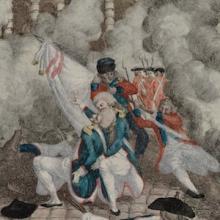
Foundation of the Republic, August 10, 1792
One of the sharper engagements of 10 August between the revolutionaries and the royal defenders occurred on the palace’s steps. The caption emphasizes the revolutionaries’ point of view.
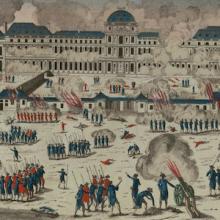
Siege of the Tuileries
This hand–tinted engraving depicts the storming of the Tuileries Palace by what appear to be small groups of well–organized soldiers of the Marseilles National Guard. The positive image of the sans–culottes is reinforced by commentaries that attribute their action to the "despotism" of Louis XVI and the "treason" of his agents against France.

Rock Art, Khoisan
Rock art, found on the walls of caves and on moveable rocks, was once thought to depict simple images of the daily lives of the Khoisan. In the last 20 years, study of oral traditions and close attention to what is actually depicted in the paintings has led to a complete revision of this theory.
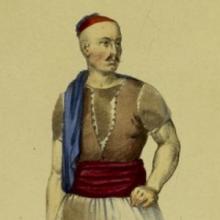
Claude Antoine Rozet Paintings
One of the first tasks undertaken by the French military after the 1830 invasion was to visually depict, and thus classify, places, things, and people so as to rule more effectively. This is a pattern seen in all modern colonial regimes worldwide. To this end, in addition to cannons, rifles, and supplies, the French expedition also included a cohort of skilled artists and draftsmen.
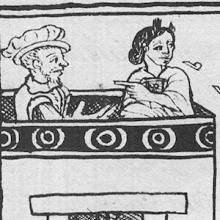
Dona Marina in Florentine Codex
This image was created by an indigenous painter in central Mexico and accompanies a written description of the conquest of Tenochtitlan, penned in both Spanish and Nahuatl in the Florentine Codex. The Florentine Codex is one of the fullest Nahuatl descriptions of the conquest. The scene shows Malintzin in the act of translating. She sits upon a palace roof with Cortés.
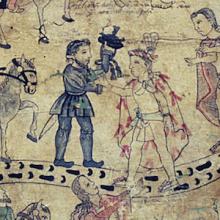
Cortés Greets Xicotencatl in Mexican Manuscript
A detail from a larger manuscript page in the Lienzo de Tlaxcala, this scene was created by an indigenous painter in central Mexico. Scenes from the Lienzo de Tlaxcala, now just fragments from a larger set of images, draw upon preconquest painting techniques and conventions.

Triumph of the Parisian Army and the People
Returning home from the October march to Versailles, the women and the guardsmen display the heads of troops who confronted the marchers. Note the use of tree branches, symbolizing support for the revolution here as in other prints.
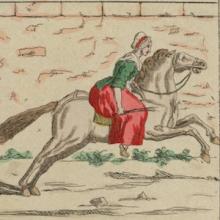
Vanguard of Women Going to Versailles
Publicity about political machinations, coupled with the continued high price of bread, mobilized market women and encouraged many men to support them. They hoped to fetch the King and his family to end attempts against the Revolution and stabilize prices.

Memorable Day at Versailles, 5 October 1789
This engraving marks success and reconciliation among revolutionaries, as men and women, as well as soldiers and civilians, relax together.
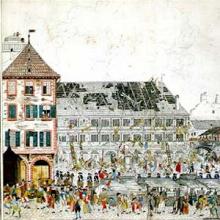
The Day of 21 July 1789
More common than clashes by workers against employers were protests over the rising price of bread. This color drawing depicts events at the City Hall of Strasbourg on 21 July 1789. Notice that the protesters are tearing up the roof and throwing the tiles down into the street to ward off soldiers; similarly, protesters in other buildings are pitching objects out of windows.
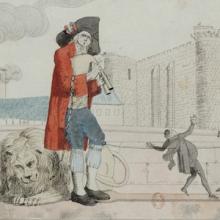
Farewell Bastille
This hand–colored engraving equates the taking of the Bastille with the rise of the Third Estate against the clergy and nobility. A commoner in a black hat sporting a tricolor cockade plays the bagpipe triumphantly over the fallen lion of the absolutist monarchy. To the side, a revolutionary soldier raises his sword to menace a priest.
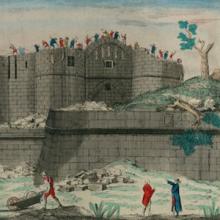
Demolition of the Bastille
This watercolor painting illustrates the "demolition" of what the text refers to as the "horrible prison" of the Bastille. As workmen tear down the spires on the roof, ordinary people rip stones off the base.
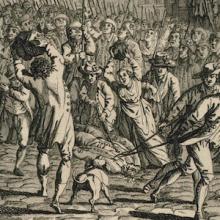
Punishment of Foulon
This engraving reveals the aftermath of the seizure of the Bastille. Here the crowd parades the severed head of the official, Foulon.

Attack on the Bastille
This engraving of the attack highlights the heroism of the people charging determinedly into the billowing clouds and firing relentlessly in the face of strong resistance emanating from the fortress.
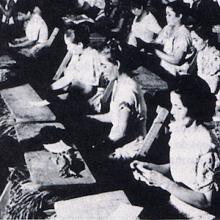
Tobacco Workers
In addition to sugar, tobacco was important to Puerto Rico’s industrial agricultural order after the arrival of the United States. Puerto Rican women and men labored in a building called a fabrica (or factory). Women’s jobs consisted of being seated for long hours rolling tobacco leaves—as visible in this 1945 photograph of women working as tobacco-strippers in a factory.